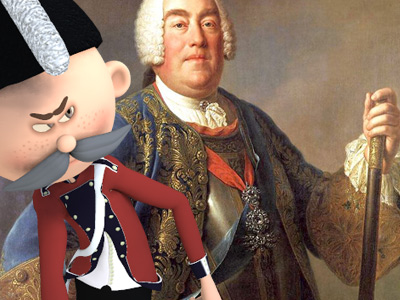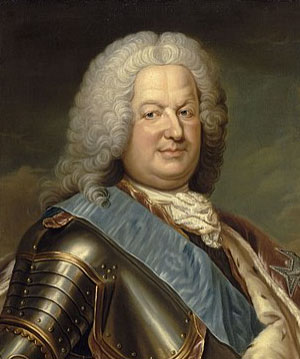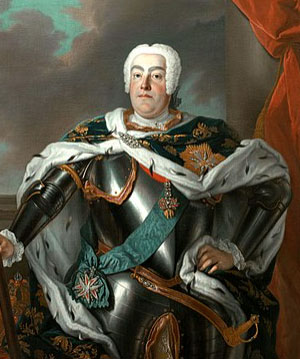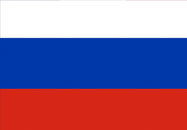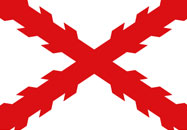War of the Polish Succession (1733–1738)
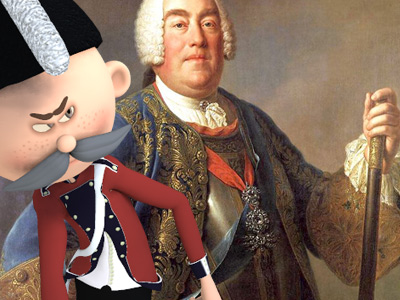
Peace Settlement
As early as February 1734 the British and Dutch had offered to mediate peace talks between the various parties of the conflict. By early 1735, proposals were being circulated. As 1735 progressed with the Austrians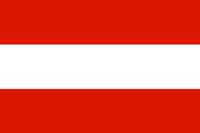 The Archduchy of Austria was a major principality of the Holy Roman Empire and the nucleus of the Habsburg monarchy. With its capital at Vienna, the archduchy was centered at the Empire's southeastern periphery. The archduchy's history as an imperial state ended with the dissolution of the Holy Roman Empire in 1806. It was replaced with the Lower and Upper Austria crown lands of the Austrian Empire. being in no real position to continue the fight, and the French concerned by the possible arrival of Russian
The Archduchy of Austria was a major principality of the Holy Roman Empire and the nucleus of the Habsburg monarchy. With its capital at Vienna, the archduchy was centered at the Empire's southeastern periphery. The archduchy's history as an imperial state ended with the dissolution of the Holy Roman Empire in 1806. It was replaced with the Lower and Upper Austria crown lands of the Austrian Empire. being in no real position to continue the fight, and the French concerned by the possible arrival of Russian Russian Empire was an empire and the final period of the Russian monarchy from 1721 to 1917, ruling across large parts of Eurasia. The rise of the Russian Empire coincided with the decline of neighbouring rival powers: the Swedish Empire, the Polish–Lithuanian Commonwealth, Qajar Iran, the Ottoman Empire, and Qing China. Russia remains the third-largest empire in history, surpassed only by the British Empire and the Mongol Empire. reinforcements on the Rhine (which did eventually occur), negotiations continued through the summer of 1735.
Russian Empire was an empire and the final period of the Russian monarchy from 1721 to 1917, ruling across large parts of Eurasia. The rise of the Russian Empire coincided with the decline of neighbouring rival powers: the Swedish Empire, the Polish–Lithuanian Commonwealth, Qajar Iran, the Ottoman Empire, and Qing China. Russia remains the third-largest empire in history, surpassed only by the British Empire and the Mongol Empire. reinforcements on the Rhine (which did eventually occur), negotiations continued through the summer of 1735.
A preliminary peace was finally concluded in October 1735 and ratified in the Treaty of Vienna in November 1738. Augustus was officially confirmed as king of Poland, Stanisław was compensated with Lorraine (which would pass on his death, through his daughter, to the French), while the former Duke of Lorraine, Francis Stephen, was made heir to the Grand Duchy of Tuscany.
Charles of Parma gave up Parma, which came under direct Austrian rule, but he was richly compensated by being confirmed instead as king of Naples and Sicily. Charles Emmanuel III of Sardinia received territories in the western part of the Duchy of Milan west of the Ticino, including Novara and Tortona.
Although fighting stopped after the preliminary peace in 1735, the final peace settlement had to wait until the death of the last Medici Grand Duke of Tuscany, Gian Gastone in 1737, to allow the territorial exchanges provided for by the peace settlement to go into effect.
The French (and their allies), hoping for détente and good relations with the Austrians, now also recognized the Pragmatic Sanction that would allow Emperor Charles's daughter Maria Theresa to succeed him. This proved a hollow guarantee, however, as the French decided to intervene to partition the Habsburg Monarchy after all following the death of Charles in 1740. The acquisition of Lorraine for the former Polish king, however, proved of lasting benefit to France The Kingdom of France is the historiographical name or umbrella term given to various political entities of France in the medieval and early modern period. It was one of the most powerful states in Europe since the High Middle Ages. It was also an early colonial power, with possessions around the world. Colonial conflicts with Great Britain led to the loss of much of its North American holdings by 1763. The Kingdom of France adopted a written constitution in 1791, but the Kingdom was abolished a year later and replaced with the First French Republic., as it passed under direct French rule with Stanisław's death in 1766.
The Kingdom of France is the historiographical name or umbrella term given to various political entities of France in the medieval and early modern period. It was one of the most powerful states in Europe since the High Middle Ages. It was also an early colonial power, with possessions around the world. Colonial conflicts with Great Britain led to the loss of much of its North American holdings by 1763. The Kingdom of France adopted a written constitution in 1791, but the Kingdom was abolished a year later and replaced with the First French Republic., as it passed under direct French rule with Stanisław's death in 1766.
Stanisław signed the act of abdication in 1736, while Augustus III pronounced a general amnesty. Michał Serwacy Wiśniowiecki was lavishly rewarded: the king made him the Grand Hetman and commander-in-chief of the Grand Duchy of Lithuania.

Augustus III of Poland, painting by Pietro Antonio Rotari
HISTORY
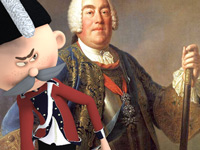
RESOURCES
This article uses material from the Wikipedia article "War of the Polish Succession", which is released under the Creative Commons Attribution-Share-Alike License 3.0.
© Stories Preschool. All Rights Reserved.
